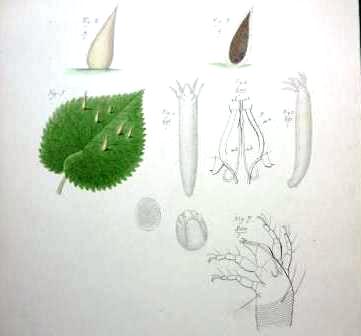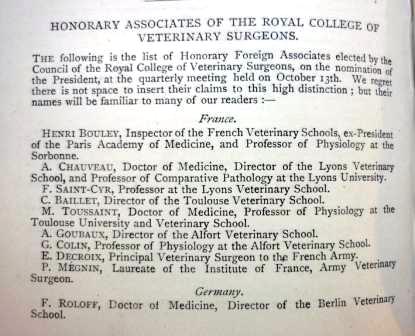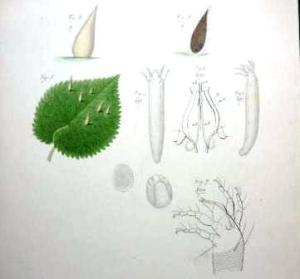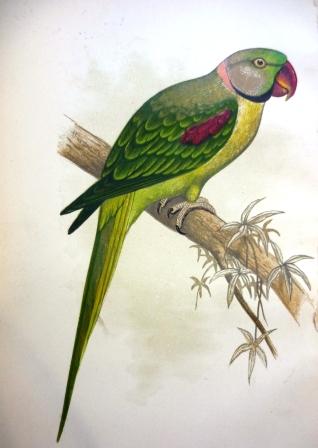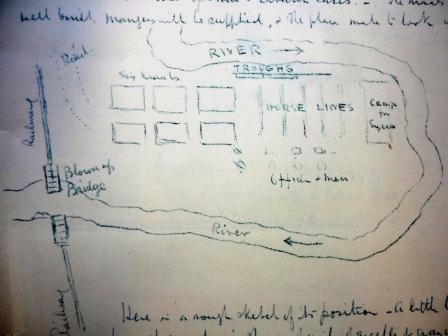On exercise
Without exercise, the body’s ‘juices will thicken, the joints will stiffen, the nerves will relax… and a crazy old age must ensue’.
This less than comforting thought is presented by George Cheyne in his Essay of Health and Long Life, published in 1724. Although the science in Cheyne’s musings might be considered a little off, I can agree with the sentiment. Exercise and outdoor pursuits keep our energy and our spirits up. Even watching other more athletic types exert themselves gives us enjoyment; the Olympic Games never fail to enthral legions of sport-phobes and sport fans alike.
Despite being a veterinary library we do have some volumes that aren’t, at first glance, entirely animal related – one example is The Annals of Sporting and Fancy Gazette, a magazine which ‘contains every Thing worthy of Remark on hunting shooting, coursing, racing, fishing…wrestling, crickets, billiards, rowing etc’. Donated by a veterinary surgeon and included in our collection because of the animal orientated sport it covers.
Not unexpectedly a lot of the activities mentioned in The Annals of Sporting and Fancy Gazette are, what we would now call, blood sports. A reader can expect to learn about the ‘Adventures of a hunter; by himself’ or inform themselves on ‘The observations of the present system of hunting’.
The precociously titled ‘Confession of a Young Sportsman’ (The Annals of Sporting and Fancy Gazette, Vol. 5, pp. 41-47, 1824) gives the experiences of a naïve young man who visits his friend, Bullstrode, in Yorkshire to shoot ‘grouse on the wing’. After a day of unsuccessful shooting he finally manages to hit some game:
‘I pointed a gun in a careless manner, not expecting to bring anything down, but was never so delighted in my life as when I saw it bounce upon the ground’.
 Successfully shooting down a grouse was obviously the object of the day’s hunting but the young man also revelled in the companionship, the challenge and especially the hunting party’s supply of alcohol. His hunting companion ‘produced a bottle of rum… Bullstrode’s eyes sparkled with joy as he beheld the unexpected and copious supply’.
Successfully shooting down a grouse was obviously the object of the day’s hunting but the young man also revelled in the companionship, the challenge and especially the hunting party’s supply of alcohol. His hunting companion ‘produced a bottle of rum… Bullstrode’s eyes sparkled with joy as he beheld the unexpected and copious supply’.
The Sportsman’s Vocal Cabinet by Charles Arminger (1830) is an entire volume dedicated to songs in praise of sport and rural pursuits. Many of the songs are about hunting and talk of the thrill of the chase or celebrate a successful hunt but I prefer the sillier extract below:
“Oh! day of joy! long wish’d for day!”
The sportsman cries, and bends his way:
The air is fresh, the morning clear,
The fields in spangled green appear’
Another song (with sixteen verses) relates the joys of crown green bowling and starts:
‘I am a jolly bowler,
Of the free thinking club;
and all my notes are fly, fly, fly,
Rub, rub a thousand, rub.
And a bowling we will go, and a bowling we will go’
Unfortunately bowling isn’t an olympic sport so we don’t have an excuse to sing this one at the moment.
Image: ‘Octobers own’ from The New Sporting Magazine 1846


